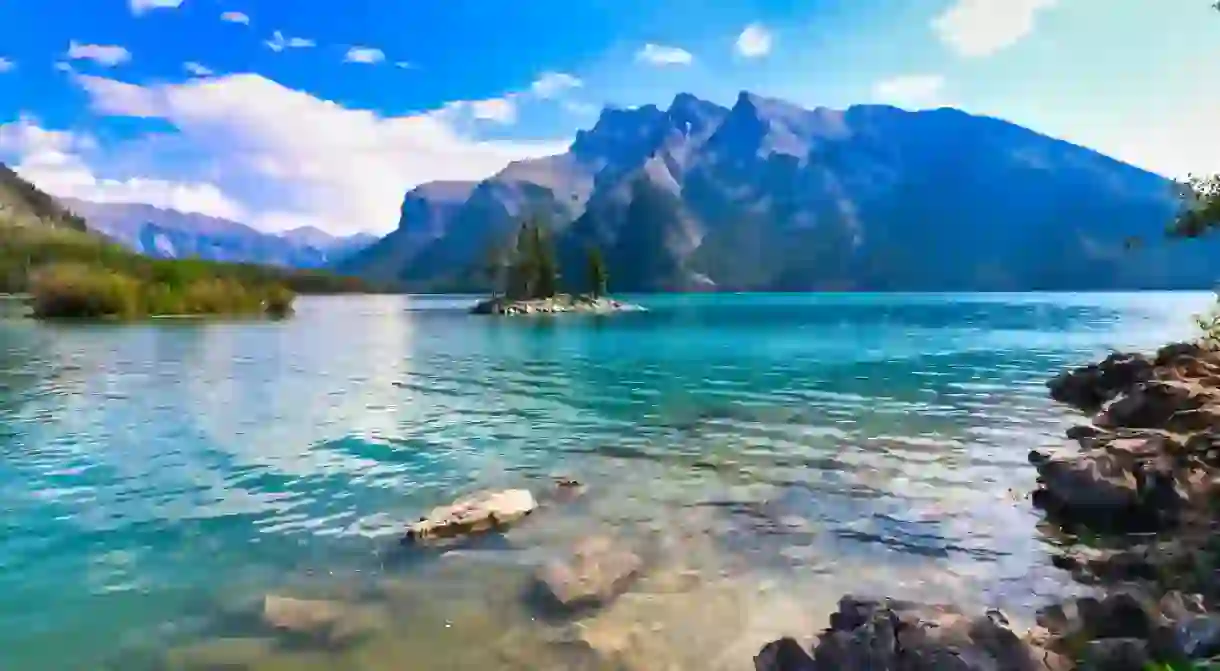Incredible Natural Wonders in Canada That Will Take Your Breath Away

Canada is spoiled when it comes to natural wonders: from epic Virginia Falls to the ancient Great Bear Rainforest, there are must-see spots dotted all across the country – from Nova Scotia to British Columbia. Picking out the most beautiful natural wonders in Canada is no easy task. With such a head-spinning, seemingly limitless catalogue of entries to choose from, it’s akin to ranking stars by their twinkle-factor. But we’ve knuckled down and done the hard work, so you can go ahead and fill your Canada itinerary with unforgettable moments.
Virginia Falls, Northwestern Territories
Natural Feature

That’s right, we’ve picked these lesser-known falls over the world-famous Niagara – and we’ll tell you why. At a staggering 315ft (96m), Virginia Falls is almost twice as high as Niagara, with a ground-shaking roar that can be heard for miles across the wooded wilderness of Nahanni National Park. Its remote location is both the reason it’s overlooked in favor of the more easily accessible Niagara, and why it makes for a more breathtaking experience. With just 1,400 visitors per year (a fraction of Niagara’s 14 million), you’ll likely have the biblical scene to yourself.
The Northern Lights, Yukon
Natural Feature

Admittedly, the Northern Lights aren’t exclusive to Canada, but with its lack of light pollution and high latitude, there are few places you’re more likely to see them than in the Yukon. There are viewing sites scattered around the territory’s main hub, Whitehorse, such as Northern Lights Resort & Spa, where you can pitch up and wait for them to appear in comfort. Alternatively, to improve your odds, book a ticket on the Aurora 360 Northern Lights flight, which will take you to the lights, rather than having to wait for them to come to you. Discover all the ways you can reconnect with nature in the Yukon.
Western Brook Pond fjord, Newfoundland and Labrador
Natural Feature

Norway, shmorway. The fjords found in Newfoundland and Labrador are every bit as beautiful, and more accessible to boot. Of the 19 notched into the province’s coastline, the Western Brook Pond is by far the most photogenic. Towering granite peaks, carpeted in pine trees, flank a lake with water so clear, you could practically read a book if it was lying at the bottom. The best angle to appreciate its majesty, however, is from the westernmost point, giving you a valley view all the way to the end. It makes for a photo good enough not just for the fridge door, but to pass down to the grandkids, too.
Hopewell Rocks, New Brunswick
Natural Feature

The teetering stacks and wave-carved archways that make up the Hopewell Rocks at the north end of the Bay of Fundy are spectacular, but it’s what goes on around them that’s truly remarkable. The Bay of Fundy sees the largest tidal reach of anywhere in the world – at high tide, these rock stacks just look like tiny tree-topped islets. But when the tide goes out, dropping 52ft (16m), the entire stacks are exposed to the point that you can walk between them on the exposed seafloor. Stay nearby at one of these eco-friendly Maritime retreats.
Lake Moraine, Alberta
Natural Feature

Lake Louise is probably the most well-known of the stupidly beautiful glacial lakes in Banff National Park, mostly due to its size and the fairytale-like Fairmont Chateau hotel that overlooks it. But smaller, loftier Lake Moraine is the real jewel in the crown – a pool of dazzling turquoise, cupped by sheer-sided peaks. Hire a canoe from Moraine Lake Lodge, and paddle out into the middle for the full vertigo-inducing effect, where the surrounding mountains appear to loom over you like watchful gods cast in granite. Stay in one of these remarkable mountain lodges while you’re here.
The Great Bear Rainforest, British Columbia
Natural Feature

For starters, there’s nowhere else on the planet that you’ll find the mysterious creature that stalks this wooded wonderland. The kermode bear, or spirit bear, as it’s known by the First Nations that inhabit the area, is a golden-coated variation of the black bear unique to this part of the world. Catching a glimpse of one, foraging near a forest stream, is a once-in-a-lifetime moment – if you’re lucky. But it’s not the only draw of this pristine realm of green: grizzly bears call the rainforest home, too, while humpback whales are often spotted just offshore.
Baffin Island, Nunavut
Natural Feature

If you like your landscapes with a dash of physical intimidation, and a side order of man-eating wildlife, then you’ll love Baffin Island. It’s the largest island in Canada, a frozen hard slab of northern Nunavut, cast adrift in the glassy waters of the Arctic circle. If you think it looks like it could be the backdrop for a gritty Viking film, you’d be on the money – it is thought that Norse explorers discovered Baffin Island (and, by association, North America) long before Christoper Columbus sailed into town. Perhaps it was the polar bears that put them off, however, as their stay was short-lived.
Haida Gwaii, British Columbia

Check out some of our best tours of Canada!
Natural Feature

Canada offers a wealth of life-changing experiences, from the breathtaking Rocky Mountains to the energetic Eastern cities. There is something for every traveler, whether they are after the Northern Lights, touring quaint little towns, or spending time in nature.













